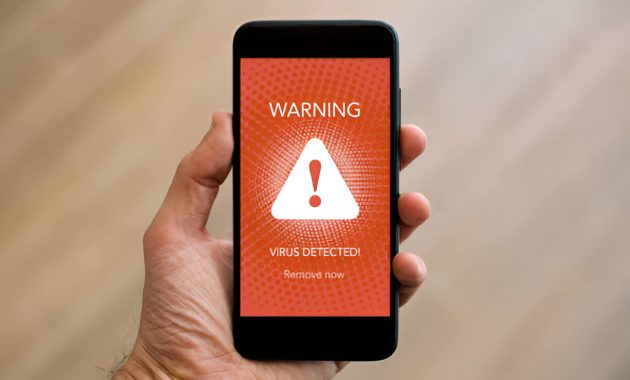This article examines six typical causes of unexpected phone shutdowns: battery issues, software glitches, and malware. Understanding these factors helps readers diagnose and resolve device problems, improving their mobile experience.
Understanding the Frustration of Random Phone Shutdowns
Random phone shutdowns are frustrating and disruptive, potentially causing missed calls and data loss. This common issue can occur during calls or app usage and stems from various causes.
This common problem can disrupt your daily routine and leave you feeling irritated. Here are six typical causes and solutions to help you regain control of your device:
1. Battery Issues
Battery issues are often the primary reason for smartphone malfunctions, particularly unexpected shutdowns. As devices age, their batteries naturally degrade, reducing capacity and potential performance problems. A faulty battery can cause your phone to shut down unexpectedly, even when the battery indicator shows a significant charge remaining.
To diagnose battery-related issues, start by monitoring your device’s drain rate. It may be time for a battery health check if you notice rapid depletion or inconsistent battery life. Most modern smartphones have built-in battery diagnostic tools to provide insights into your battery’s condition.
If your phone frequently shuts down at low battery percentages (e.g., 20-30%), this is a clear indicator of battery degradation. In such cases, a battery replacement is often the most effective solution. Many manufacturers and authorized service centers offer battery replacement services, which can significantly extend your device’s lifespan and restore its performance.
Remember, using original or high-quality replacement batteries is crucial for maintaining your device’s safety and optimal functionality. Avoid cheap, unauthorized replacements, as they may pose safety risks or cause further damage to your smartphone.
2. Software Glitches and Operating System Problems
Software glitches and operating system problems are common issues that can significantly impact computer performance. These issues often manifest as system crashes, unexpected errors, or sluggish operation. Software bugs, which are programming errors in applications or the operating system itself, can cause unpredictable behavior and compromise system stability.
Regular OS updates are crucial for maintaining system health, often including patches for known bugs and security vulnerabilities. However, these updates can occasionally introduce new problems or conflicts with existing software. It’s essential to keep your system up-to-date and be prepared to troubleshoot any post-update issues.
App conflicts occur when multiple programs interfere with each other’s operations, leading to system instability or reduced performance. This can happen due to incompatible software versions or resource conflicts. To mitigate these issues, it’s advisable to keep all applications updated and avoid running too many resource-intensive programs simultaneously.
When encountering persistent software problems, effective troubleshooting techniques can help identify and resolve the issue. These may include running built-in diagnostic tools, checking system logs, or performing a clean boot to isolate problematic software. In some cases, reinstalling the affected application or performing a system restore may be necessary to resolve stubborn software glitches.
3. Overheating
Overheating is common for many smartphone users, especially during hot summer months or when using resource-intensive applications. When a phone’s internal temperature rises beyond safe levels, it can trigger a thermal shutdown to protect its components from damage. While necessary, this protective measure can be frustrating for users.
Several factors contribute to phone overheating, including prolonged exposure to direct sunlight, running multiple apps simultaneously, or charging the device in high-temperature environments. To prevent heat-related issues, it’s crucial to practice proper temperature management. This includes avoiding leaving your phone in hot cars, removing protective cases during charging, and closing unnecessary background apps.
If you notice your phone becoming uncomfortably warm, there are several steps you can take to cool it down. First, move the device to a more fantastic location and turn off the screen. You can also remove any cases or covers to improve heat dissipation. In extreme cases, powering off the phone is necessary to allow it to cool down safely.
Understanding the causes of overheating and implementing preventive measures ensures your phone maintains optimal performance and longevity, even in challenging thermal conditions.
4. Hardware Malfunctions and Physical Damage
Hardware malfunctions and physical damage can significantly impact your phone’s performance and functionality. Common issues include damaged components due to drops or impacts, water damage from accidental submersion or exposure to liquids, and loose connections within the device. These problems can manifest as unresponsive touchscreens, distorted audio, camera malfunctions, or complete device failure.
To diagnose hardware issues, start by visually inspecting your phone for any apparent signs of damage. Look for cracks, dents, or water indicators that may have been triggered. If no visible damage is present, you can use built-in hardware diagnostics tools or third-party apps to test various components like the speaker, microphone, and sensors.
If the device is damaged by water, immediately power off it and remove the battery if possible. Avoid charging the phone or pressing buttons, which can cause short circuits. Instead, place the device in a bag of uncooked rice or silica gel packets to absorb moisture.
It’s best to seek professional phone repair services in severe hardware malfunctions or physical damage. Attempting to fix complex hardware issues without proper knowledge and tools can lead to further damage or void your warranty. Certified technicians have the expertise to accurately diagnose and repair damaged components, ensuring your device is restored to proper working condition.
5. Power Button Problems
Power button problems can be a significant inconvenience for smartphone users. A sticky or complete power button malfunction can make it difficult to turn your device on or off, access certain features, or perform a hard reset when needed.
Common causes of power button issues include:
- Dirt and debris accumulation
- Physical damage from drops or impacts
- Wear and tear over time
- Manufacturing defects
If you’re experiencing power button problems, try these troubleshooting steps:
- Clean the button area with a soft, dry cloth
- Use compressed air to remove any stubborn debris
- Perform a soft reset of your device
- Update your phone’s software
If these steps don’t resolve the issue, you may need to consider button replacement. This typically requires professional repair, as it involves dealing with delicate hardware issues. Some users opt for temporary workarounds, such as assistive touch features or third-party apps to mimic power button functions.
Remember, persistent phone button problems may indicate more severe hardware issues. If you need clarification on the cause or solution, consult with a certified technician to avoid potentially damaging your device further.
6. Malware and Viruses

Malware and viruses pose significant hidden threats to your phone’s stability and overall performance. These malicious programs can infiltrate your device by downloading infected apps, clicking on suspicious links, or connecting to unsecured networks. Once inside, they can wreak havoc on your phone’s system, compromising its stability and potentially exposing your data.
To protect your device, it’s crucial to implement robust cybersecurity measures. Regular virus scans using reputable antivirus apps can help detect and remove potential threats before they cause significant damage. Many apps offer real-time protection, scanning new downloads and monitoring system changes for suspicious activity.
Malware detection is an ongoing process, and staying vigilant is vital. Be cautious when downloading apps, especially from third-party sources, and keep your phone’s operating system and applications current. These updates often include security patches that address newly discovered vulnerabilities.
Enhancing your phone’s security also involves practicing safe browsing habits and being wary of phishing attempts. Avoid clicking on links from unknown sources, and be cautious when granting app permissions. By prioritizing your device’s cybersecurity, you can significantly reduce the risk of malware and viruses compromising your phone’s stability and safeguarding your personal information.
How to Diagnose and Fix Your Phone’s Shutdown Issues
When your phone unexpectedly shuts down, it can be frustrating and disruptive. To diagnose and fix shutdown issues, start with these troubleshooting steps:
First, ensure your phone’s battery is adequately charged. Low battery levels can cause unexpected shutdowns. If charging doesn’t solve the problem, allow your device to cool down to check for overheating issues.
Next, perform basic phone diagnostics. Update your operating system and apps, as outdated software can cause conflicts. Clear your cache and delete unnecessary files to free up storage space.
For more persistent issues, try these DIY fixes: Perform a factory reset (after backing up your data), or remove and reinsert the battery if your phone allows it. Some users succeed by recalibrating the battery through a full discharge and recharge cycle.
If these steps don’t resolve the issue, it may be time to seek professional help. Contact your phone manufacturer or visit an authorized service center for expert diagnosis and repair.
To prevent future shutdown problems, practice good phone maintenance. Avoid exposing your device to extreme temperatures, use original chargers, and regularly update your software. Following these guidelines can extend your phone’s lifespan and minimize unexpected shutdowns.
Keeping Your Phone Powered On and Running Smoothly
In conclusion, maintaining your phone’s battery life and overall performance is crucial for ensuring a seamless mobile experience. By implementing the tips and strategies discussed in this article, you can significantly extend your device’s battery life and keep it running smoothly for extended periods.
Remember to update your phone’s software regularly, manage your apps efficiently, and adjust your device settings to optimize power consumption. Additionally, practicing good charging habits and investing in high-quality accessories can improve your phone’s longevity.
By taking a proactive approach to phone maintenance, you’ll save money on potential repairs or replacements and enjoy a more reliable and efficient device. Remember these guidelines, and you’ll be well-equipped to maximize your phone’s performance and battery life for years.










